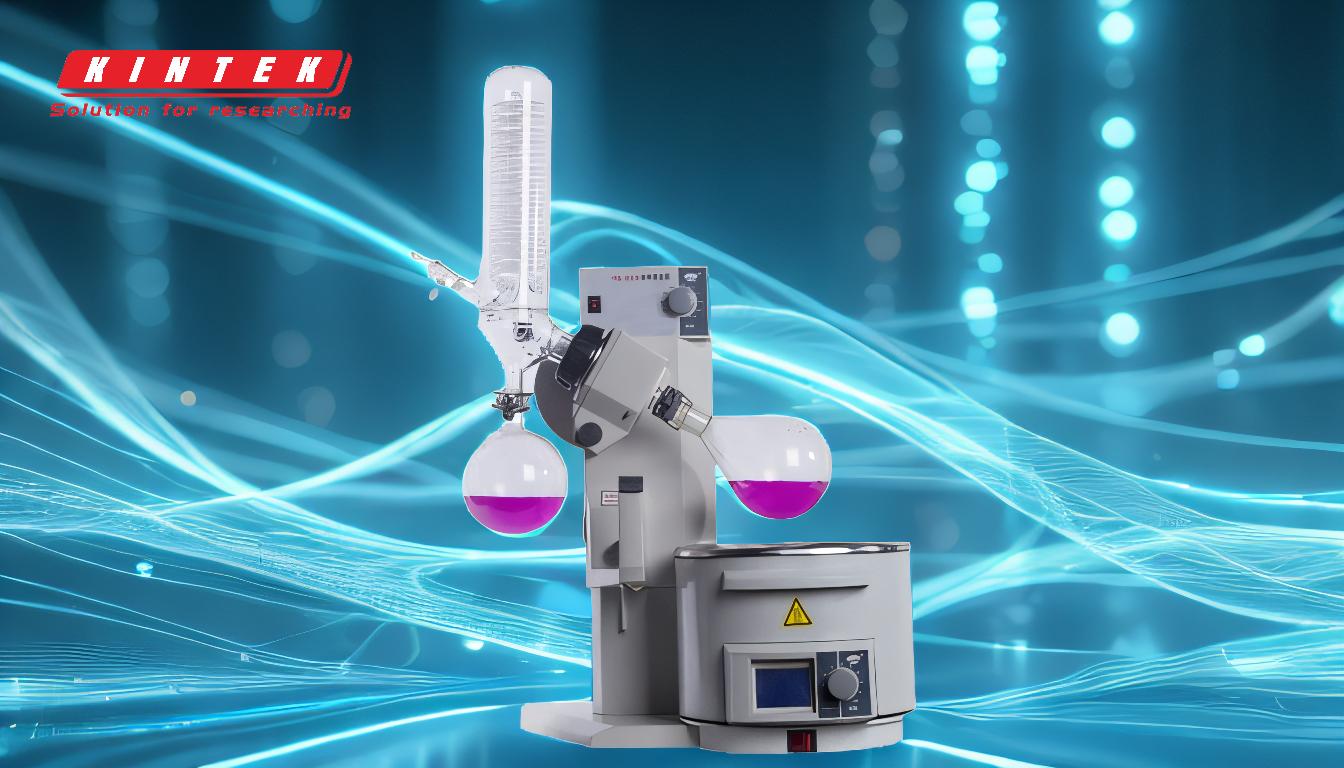Evaporating methanol without a rotary evaporator can be achieved using alternative methods such as the Falling Film Evaporator and the Wiped Film Evaporator. These methods rely on thermal separation principles, where a thin film of liquid is exposed to heat, allowing for efficient evaporation. The Falling Film Evaporator operates similarly to a Vertical Shell & Tube Heat Exchanger, while the Wiped Film Evaporator uses a thin, turbulent liquid film to enhance evaporation. These alternatives are suitable for handling methanol and other volatile solvents, offering controlled evaporation without the need for a rotary evaporator.
Key Points Explained:

-
Falling Film Evaporator
- How It Works: This method operates similarly to a Vertical Shell & Tube Heat Exchanger. Methanol is introduced at the top of the evaporator and flows downward as a thin film over heated surfaces. The heat causes the methanol to evaporate, while the remaining liquid is collected at the bottom.
-
Advantages:
- Efficient heat transfer due to the large surface area of the thin film.
- Suitable for heat-sensitive materials like methanol, as it minimizes thermal degradation.
- Continuous operation allows for large-scale evaporation.
- Applications: Commonly used in industries for concentrating heat-sensitive liquids, such as pharmaceuticals and food processing.
-
Wiped Film Evaporator
- How It Works: This method uses a rotating wiper blade to spread the methanol into a thin, turbulent film on the inner surface of a heated cylinder. The turbulence enhances heat transfer, causing rapid evaporation of the methanol. The vapor is then condensed and collected.
-
Advantages:
- High evaporation rates due to the turbulent film and efficient heat transfer.
- Handles viscous or heat-sensitive materials effectively.
- Suitable for small to medium-scale operations.
- Applications: Used in chemical, pharmaceutical, and food industries for processing solvents and other volatile compounds.
-
Comparison of Methods
- Falling Film Evaporator: Best for large-scale, continuous processes where gentle handling of heat-sensitive materials is required.
- Wiped Film Evaporator: Ideal for small to medium-scale operations, especially when dealing with viscous or heat-sensitive liquids.
-
Considerations for Methanol Evaporation
- Safety: Methanol is highly volatile and flammable. Ensure proper ventilation and use explosion-proof equipment.
- Temperature Control: Maintain precise temperature control to prevent overheating and degradation of methanol.
- Residue Handling: Ensure proper disposal or recovery of any residual methanol to comply with environmental regulations.
-
Alternative Methods
- If specialized equipment like Falling Film or Wiped Film Evaporators is unavailable, simple methods like air drying or using a hot plate with proper ventilation can be employed. However, these methods are less efficient and require careful monitoring to ensure safety and effectiveness.
By understanding these key points, a purchaser can evaluate the most suitable method for evaporating methanol based on their specific requirements, scale of operation, and safety considerations.
Summary Table:
| Method | How It Works | Advantages | Applications |
|---|---|---|---|
| Falling Film Evaporator | Methanol flows as a thin film over heated surfaces, evaporating efficiently. | - Efficient heat transfer, gentle for heat-sensitive materials, large-scale. | Pharmaceuticals, food processing. |
| Wiped Film Evaporator | Rotating wiper blades create a turbulent film, enhancing heat transfer. | - High evaporation rates, handles viscous/heat-sensitive materials, small-medium scale. | Chemical, pharmaceutical, food industries. |
Need help choosing the right method for methanol evaporation? Contact our experts today!










